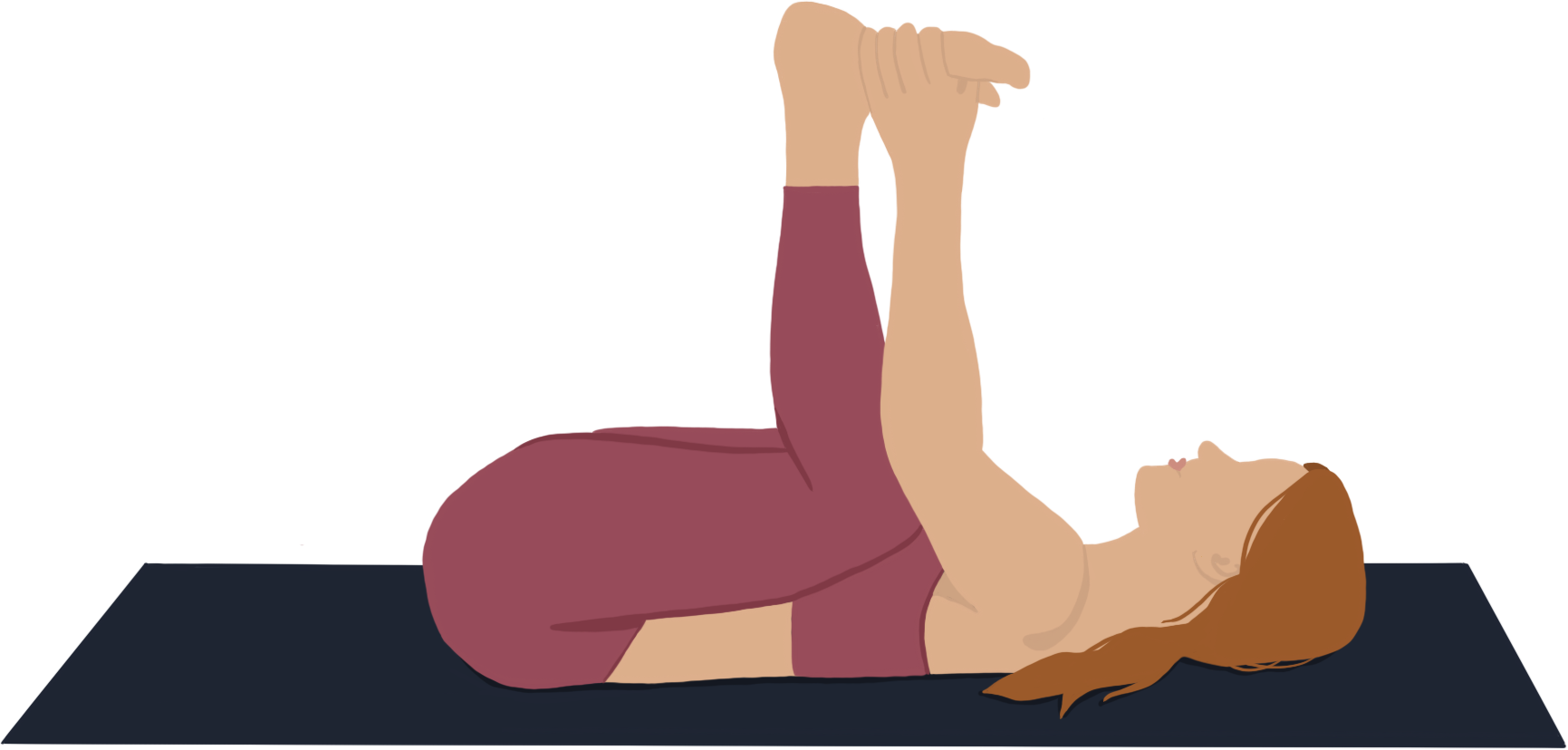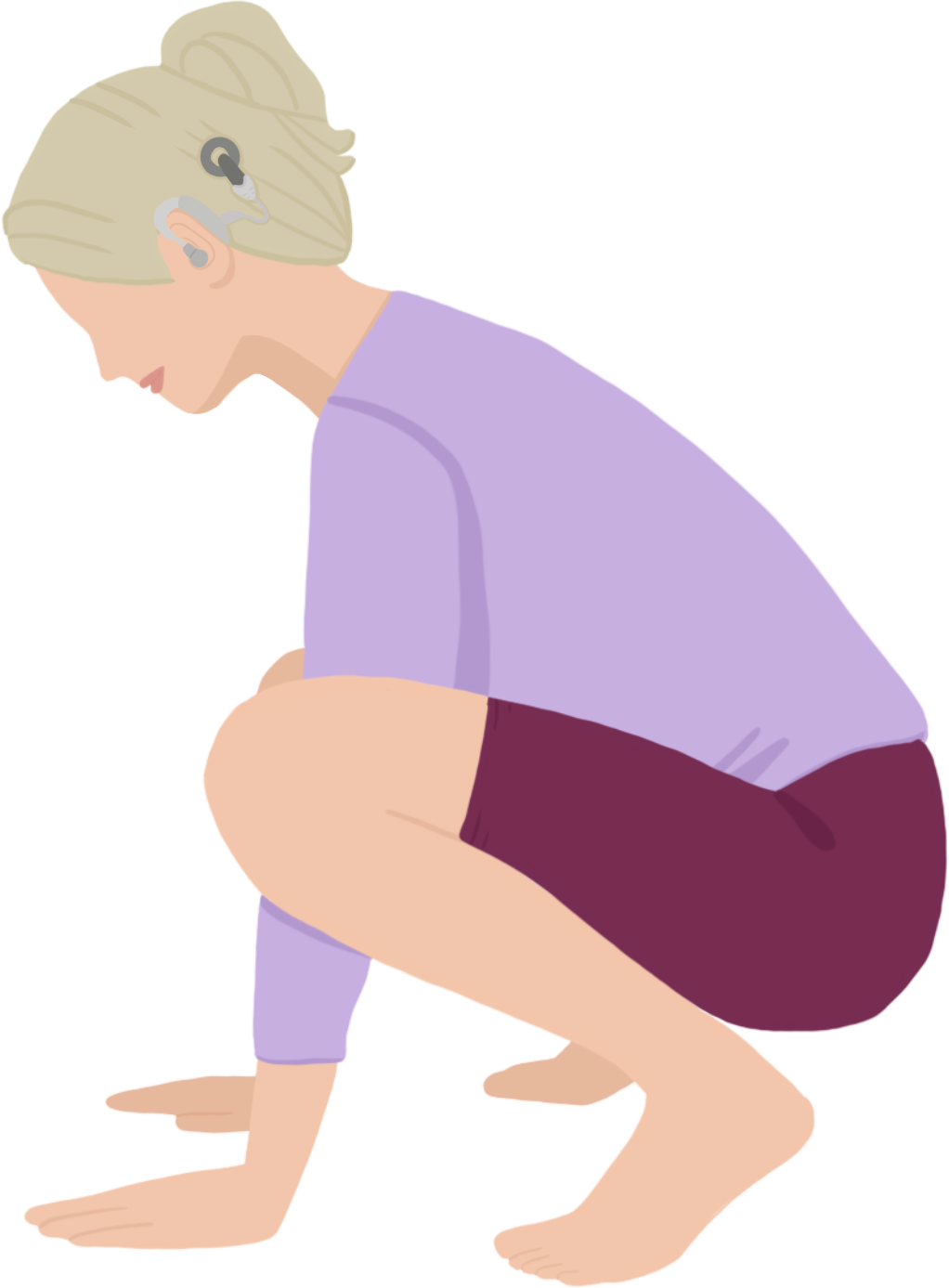You know how if you strain your neck and can’t move it around easily it helps to get a soft massage and loosen up the muscles? Well, that’s basically the same concept here, loosen the muscles and reduce the pain.
Vaginal dilation aims to allow the brain and the body to experience non-threatening, non-painful sensations of stretching and touch, without activating those aggressive and painful pelvic floor spasms.
We want to maintain a relaxed pelvic floor and break the pain fear loop (see fear, anxiety, and sexual trauma for more on the pain fear loop).
So without further adieu, welcome to the weird and wonderful world of vaginal dilators (eeep). Here’s a breakdown of the basics
- Vaginal dilators are smooth objects that come in a variety of graduated sizes and weights
- They usually come in a set that increases in size, starting real small like a pinkie finger
- They can be plastic, rubber, or glass cylinder-shaped
- They are used to expand the vagina in width and depth, to provide elasticity to the tissues, and to allow for comfortable sexual activity (yes please)
- Vaginal dilators are commonly used to treat dyspareunia (aka pain during intercourse)
- Can sometimes be referred to as vaginal trainers, desensitization therapy, or pelvic floor down training
- Dilators are therapy devices, not sex toys! (well anything can be a sex toy but you know what we mean)

The purpose of using dilators is to reduce sensitivity to insertion. We are trying to train the pelvic floor muscles to relax when something is inserted into the vagina and not to spasm or tighten. So how do you use them?
How to use a dilator
We thought you’d never ask! Here we goooo
Step one: Find a safe, comfortable, and private spot, preferably where you are warm, relaxed, and not terrified of someone bursting in to borrow something or ask what you are up to. It is most common to lay flat on your back (pillows are great here), however, you may like to lay on your side if that is more comfortable for you.
Step two: You may like to start with some simple stretches to loosen up or some breathing exercises to relax and center yourself. Contract and relax your pelvic floor focusing on long relaxing breaths.
Step three: Choose the smallest dilator (or whatever size you most feel comfortable with) and lubricate it generously (a super important part on lube coming up next, don’t miss it). Seriously the more lube the better!
Top tip! Before you lubricate you may want to run your dilator under some warm water to heat it a little. Cold can sometimes be uncomfortable! You can even lay down with a wheat pack or heat pack if you like, whatever makes you feel more comfortable and relaxed.
Step four: Bend both knees and spread your legs apart. Remember to relax your body by taking deep breaths into that beautiful belly. Gently insert the smaller round end of the dilator into your vagina with a small amount of pressure. It’s important you only insert the dilator as deeply as you are comfortable with into the pelvic wall, remember GO SLOW PLS.
Step five: Once the dilator is comfortably inserted you may like to remove your hand and any pressure and let the dilator stay in place. At first, your muscles may involuntarily contract and try to push out the dilator, but over time, as you learn to relax, you can keep the dilator in longer.
Step six: Once you can comfortably insert the dilator you may like to work by stretching it from side to side to massage or stretch the pelvic floor and vaginal opening. This is a great time to explore and learn more about your pelvic floor and vagina, understanding how and why your muscles contract, tighten, and how they can be loosened. You may like to contract and relax your pelvic floor muscles and try different breathing techniques to test your pelvic relaxation with your dilator inserted.
Once you’re done, clean your dilator in warm soapy water and leave it out to air dry. You may experience a lingering burning sensation after use, this is normal and is related to neuropathic pain (see glossary) where your nerves are sending pain messages up to your brain. It will fade on its own!
So how long do I do this for? How long and how often you dilate is up to you. While some healthcare professionals will recommend 1-2 times per day, or for 30 minutes at a time the great thing is you can go at a pace that YOU are comfortable with.

Does the thought of laying in your bed and sticking something up your vagina while your sister does an online Zumba class outside your room make you wanna cry? Don’t dilate!
Wait until you are relaxed and feeling in control of your body and environment. It could also be important to be in a room with a lock, where you feel confident no one will accidentally come in.
A great time to dilate is after a shower or a warm bath when you are feeling relaxed and comfortable. Similarly, if you are in the bathroom maybe lay down on a towel or pillow instead of cold tiles, we want to make this experience as pleasant as possible right?
Do you have 20 minutes after your shower before you have to leave for work? That’s a great time to fit in a 5-minute vaginal stretch using a comfortable dilator and get on with your day!
Remember
Some handy things to remember:
- Using dilators on your own and in a safe place means you can go at a pace you are comfortable with and will help you feel safe and in control
- Getting used to dilator therapy can take some time
- GINAs will progress at different rates, depending on their condition
- Only move up to the next size dilator once you feel ready and can insert without pain or tightening
- Remember that your vagina slants somewhat downwards, so if you are lying on your back do not push the dilator in at a right angle
- If you are going to keep the dilator in for a few minutes, try reading or using your phone to distract yourself
- It’s ok to go backward! Some days are hard, listen to your body, and do what is most comfortable for you
- Sometimes the smallest dilators are best. They allow you to stretch, move, and explore parts of the vagina and pelvic floor slowly, and individually, they are great so don’t forget to keep using them even as you progress to larger sizes.

One super idea often not discussed about dilation is masturbation!
YES, MASTURBATION!
We are all entitled to pleasure so let’s throw out the taboo associated with getting off and let’s get off!
Later on, we will discuss arousal, but basically, masturbation before dilation is super helpful as your brain and body are sending messages to each other and the messages are all saying ‘I WANNA HAVE SEX’.
The vagina will lubricate, lengthen, and will be far more welcoming to any kind of penetration. This is where you can use your dilators, see if you notice a difference!
You may prefer dilator exercises to be purely clinical and focused on breathing and connecting body and mind, but some may want it to be more fun and enjoyable and similar to the experience with a partner – both are valid. Do whatever makes you feel comfortable.



 The goal with pelvic floor exercises is to combine simple stretches with mindful breathing techniques to loosen the muscles in and around the pelvis and relax the pelvic floor.
The goal with pelvic floor exercises is to combine simple stretches with mindful breathing techniques to loosen the muscles in and around the pelvis and relax the pelvic floor.


















